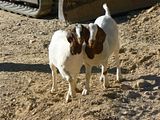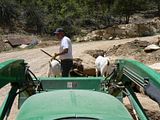
 1
1









Sustainable Plantations and Agroforestry in Costa Rica




Dreams don't work unless you do





Sustainable Plantations and Agroforestry in Costa Rica




 1
1




We document our shenanigans on the Hawk-Mo Hotwire: mudly.wordpress.com








 1
1





 1
1





















































 2
2












 1
1




A human being should be able to change a diaper, plan an invasion, butcher a hog, conn a ship, design a building, write a sonnet, balance accounts, build a wall, set a bone, comfort the dying, take orders, give orders, cooperate, act alone, solve equations, analyze a new problem, pitch manure, program a computer, cook a tasty meal, fight efficiently, die gallantly. Specialization is for insects.
-Robert A. Heinlein





 1
1








Chris Kott wrote:So I would guess that the myotonic goats wouldn't be the breed of choice in an area with high predation, eh? Or is that when you make sure you have a few dogs with the right temperament?
As to keeping the parasite count down, I have read on other threads in this forum that allowing them to browse on certain aromatic tree species, mainly cedars and cypresses, can pretty much eliminate any parasite problem. This might be overstatement due to enthusiasm, but these anecdotal cases point to a very permaculture solution to this problem.
-CK
 2
2








A human being should be able to change a diaper, plan an invasion, butcher a hog, conn a ship, design a building, write a sonnet, balance accounts, build a wall, set a bone, comfort the dying, take orders, give orders, cooperate, act alone, solve equations, analyze a new problem, pitch manure, program a computer, cook a tasty meal, fight efficiently, die gallantly. Specialization is for insects.
-Robert A. Heinlein




Eccentric and slightly grumpy English smallholder




Doug Mac wrote:I remember your story! Post some new pics!






Zone 5/6
Annual rainfall: 40 inches / 1016 mm
Kansas City area discussion going on here: https://www.facebook.com/groups/1707573296152799/




 2
2




 3
3




Blog: 5 Acres & A Dream
Books: Kikobian Books | Permies Digital Market

|
Because there is no spoon. Just a tiny ad:
Learn Permaculture through a little hard work
https://wheaton-labs.com/bootcamp
|





